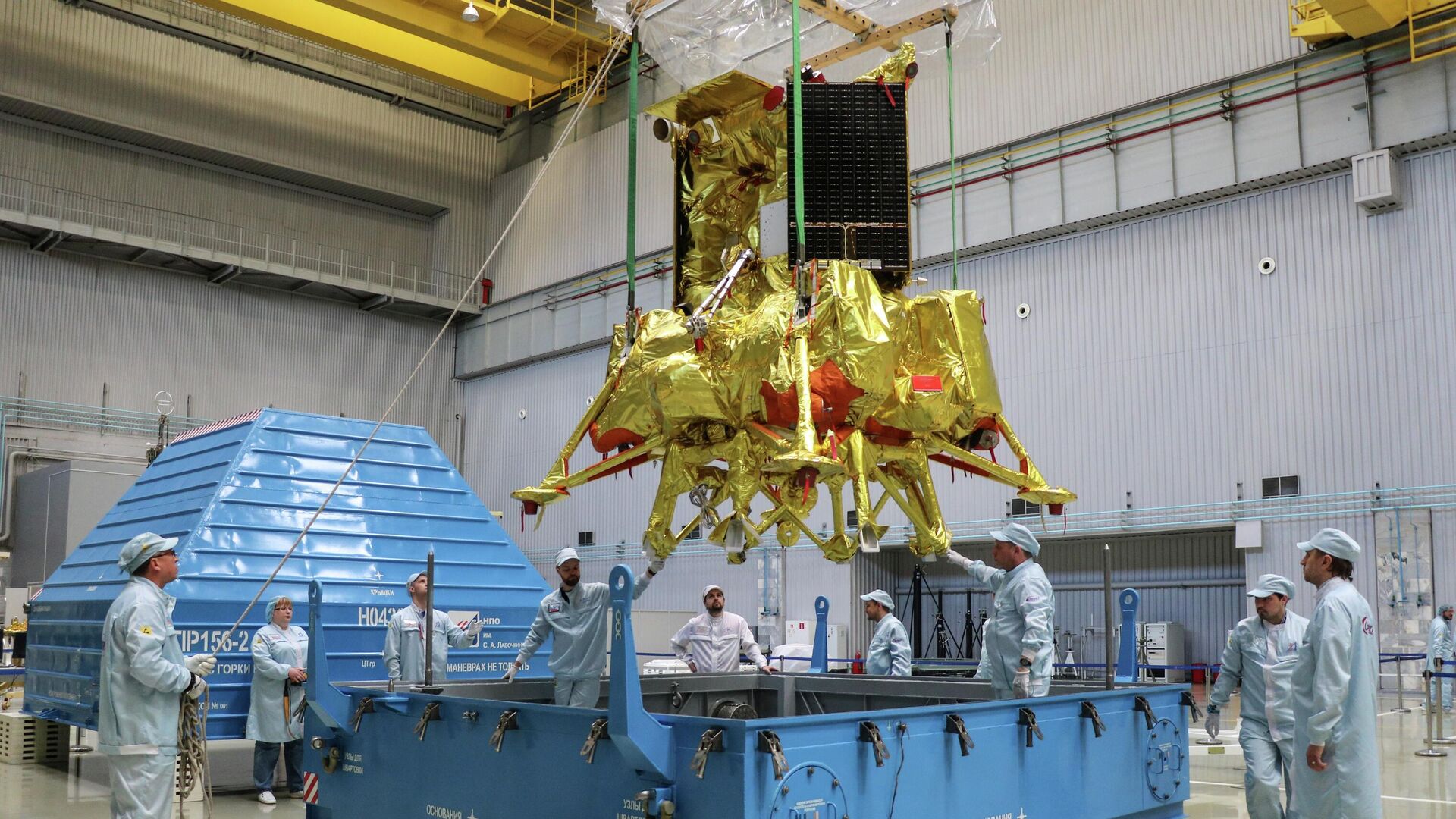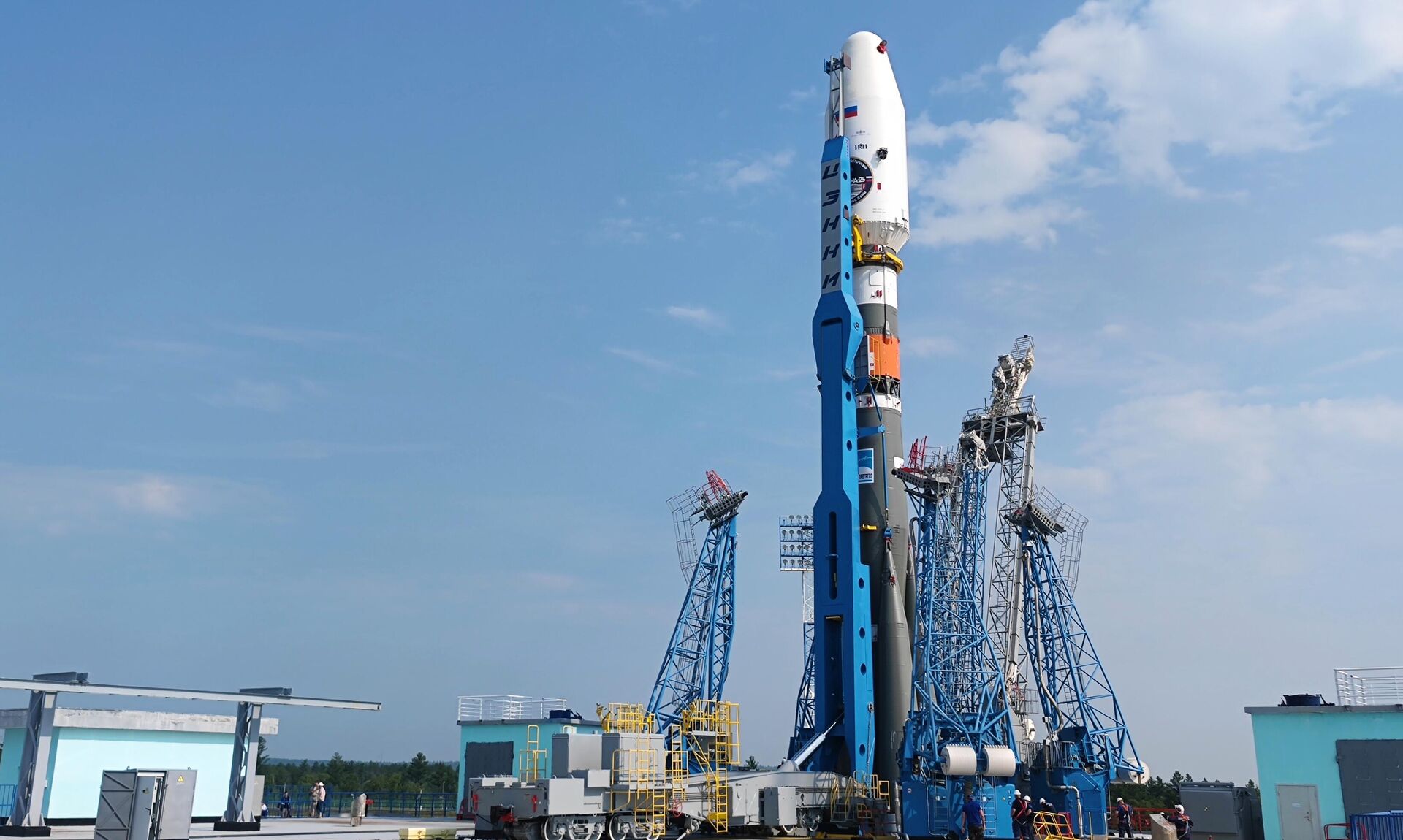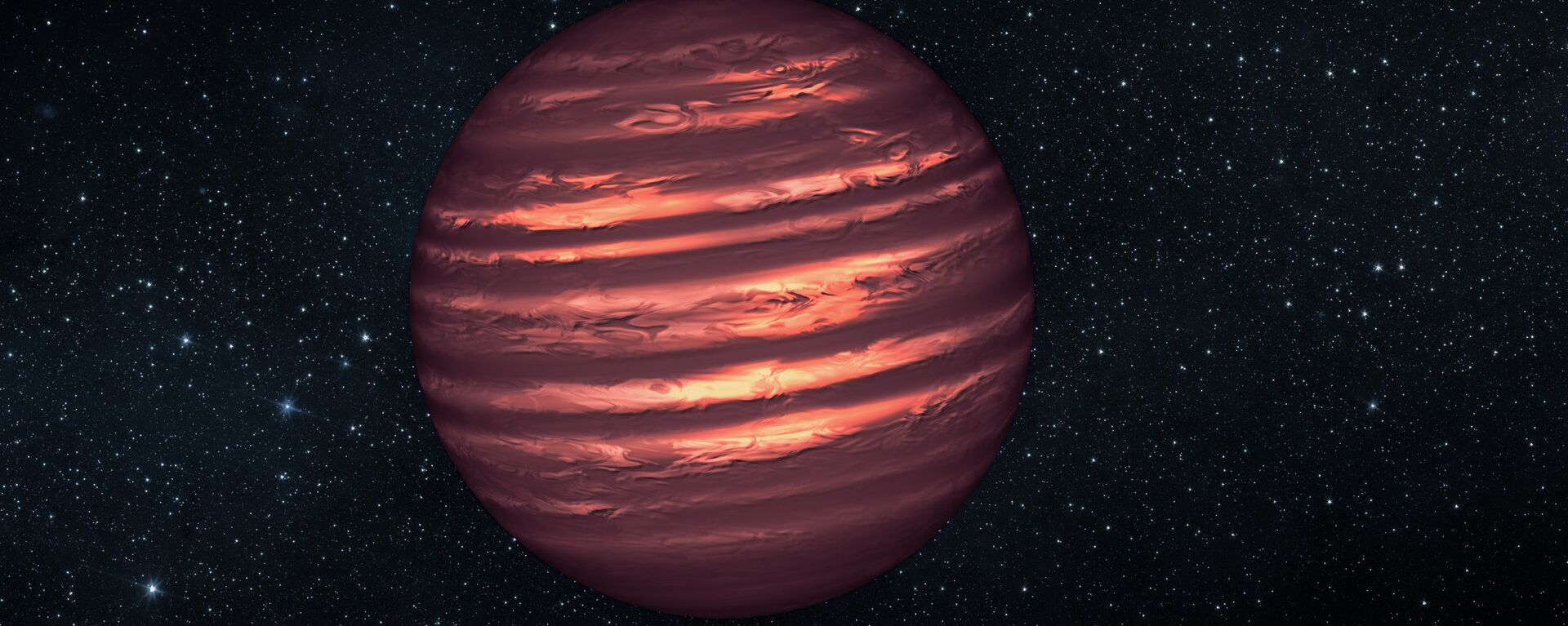https://sputnikglobe.com/20230810/rebirth-of-russian-lunar-program-why-is-luna-25-moon-mission-so-significant-1112509953.html
'Rebirth of Russian Lunar Program': Why is Luna-25 Moon Mission So Significant?
'Rebirth of Russian Lunar Program': Why is Luna-25 Moon Mission So Significant?
Sputnik International
Russia is returning to the Moon in a big way with the Luna-25, a compact lunar lander packed with scientific instruments. The mission’s primary objective will be to search for water at the Moon’s South Pole. What’s the Luna-25’s significance in the cosmic grand scheme of things? Sputnik reached out to a pair of Russian space experts to find out.
2023-08-10T14:54+0000
2023-08-10T14:54+0000
2023-08-12T10:15+0000
beyond politics
earth
russia
china
luna-25 (moon-25)
soyuz-2.1b
moon
soviet union
us
india
https://cdn1.img.sputnikglobe.com/img/07e7/08/0a/1112509091_0:0:3041:1711_1920x0_80_0_0_299ca6422c4c5fdecce754946f7767c4.jpg
A Soyuz-2.1b rocket with Fregat upper stage and Luna-25 lunar module on board is making final preparations for launch at the Vostochny Space Port in the Russian Far East. If all goes to plan, the mission will begin at 2:10 am Moscow time Friday morning.Onboard the compact lander are a series of scientific instruments with 30 kg weight, including neutron and gamma-ray analyzers, plasma radiation detector, laser mass-spectrometer and laser retroreflector, manipulator arm, moon dust and micro-meteorite particle analyzer, thermal regolith measurer, and panoramic and local imaging camera systems. The Luna-25 is equipped with a four megabit per second data uplink, allowing scientists back on Earth to keep abreast of various measurements.What are the Luna-25's Primary Mission Objectives?The Luna-25 mission has several major tasks, includingRussia's Return to the Moon?Another first for Russia will be making a landing on one of the Moon’s poles, with previous missions (not just by the USSR but by most other space powers as well before the Chandrayaan-1 and China's successful soft landing on the south pole in 2019) typically landing at mid-latitudes."Compared with the Luna-24, which was launched some forty-seven years ago, the Luna-25 is a relatively small lander – half the Luna-24’s size and three times lighter. But the spacecraft is not at all simpler than its predecessor technologically, and its compactness is the result of the use of 21st century technologies – for example, the non-hermetically sealed design of the instrument compartment, and a modern electronic component base," Afanasyev assured.What Makes the Luna-25 Unique?Technically speaking, the Luna-25 is comparable to foreign analogues, with one important caveat, according to Afanasyev.The Luna-25 "is important for the Russian space program, because this will be the first launch of a Russian spacecraft into deep space," Ivan Moiseev, the head of the Russian Institute of Space Policy, told Sputnik. "All major space powers have been flying into deep space for a long time. For us this will be the first," the academic said.Putting Politics Aside: Why is Search for Water on the Moon Important?"Civilization faces the global task of building bases on the Moon," Moiseev explained, noting that the Indian probe's discovery of large quantities of water on the lunar surface in 2019 confirmed the Earth satellite's future scientific and economic significance if humanity hopes to become a space-faring race.The importance of searching for water on the poles comes down to lunar geography, Moiseev explained, pointing out that unlike the mid-latitudes, where water cannot exist on or near the surface due to the impact of the Sun, "at the poles there are lunar craters which the Sun never touches, where temperatures are always below zero, close to absolute zero. And there ice should be preserved…Therefore, today everyone is focused on the south pole, with the goal being research, for now, to take a closer look at what’s there. The Indians continue to fly there…China is planning to do so, and has already implemented a very large lunar program. And apparently, when the Americans land another person on the Moon, they also plan to orient themselves toward the poles."Afanasyev believes the term "space race" used to characterize the space competition between the USSR and the USA during the second half of the 20th century has taken a back seat to economic and scientific considerations.Along with fuel for future interplanetary spacecraft, Afanasyev pointed out that Moon water could very well become a source of water and oxygen for life support systems of future lunar bases.In other words, the success of the Luna-25 mission could mark one small step for Russia in leaving its footprint on the Moon, and advancing humanity's spacefaring ambitions, over the coming century.
https://sputnikglobe.com/20230714/astronomers-find-rare-failed-star-mysteriously-blasting-out-radio-emissions-1111880862.html
https://sputnikglobe.com/20230429/second-ring-on-dwarf-planet-quaoar-challenges-fundamental-laws-of-astrophysics-1109931237.html
earth
russia
china
soviet union
Sputnik International
feedback@sputniknews.com
+74956456601
MIA „Rosiya Segodnya“
2023
News
en_EN
Sputnik International
feedback@sputniknews.com
+74956456601
MIA „Rosiya Segodnya“
Sputnik International
feedback@sputniknews.com
+74956456601
MIA „Rosiya Segodnya“
luna-25, moon, mission, lunar, probe, scientific, science, astronomy, research, water, search, particles, galaxy, intergalactic, russia, space program, roscosmos, luna 25 mission update, luna 25 mission, russian luna missions, did russia launch luna, russian moon mission luna, russian mission to moon, russian and us moon missions, how long did the russian luna missions stay on the moon, luna 25, luna-25, luna 25 mission
luna-25, moon, mission, lunar, probe, scientific, science, astronomy, research, water, search, particles, galaxy, intergalactic, russia, space program, roscosmos, luna 25 mission update, luna 25 mission, russian luna missions, did russia launch luna, russian moon mission luna, russian mission to moon, russian and us moon missions, how long did the russian luna missions stay on the moon, luna 25, luna-25, luna 25 mission
'Rebirth of Russian Lunar Program': Why is Luna-25 Moon Mission So Significant?
Longread
Russia is returning to the Moon in a big way with the Luna-25, a compact lunar lander packed with scientific instruments. The mission’s primary objective will be to search for water at the Moon’s South Pole. What’s the Luna-25’s significance in the cosmic grand scheme of things? Sputnik reached out to a pair of Russian space experts to find out.
A Soyuz-2.1b rocket with Fregat upper stage and Luna-25 lunar module on board is making final preparations for launch at the Vostochny Space Port in the Russian Far East. If all goes to plan, the mission will begin at 2:10 am Moscow time Friday morning.
Onboard the compact lander are a series of scientific instruments with 30 kg weight, including neutron and gamma-ray analyzers, plasma radiation detector, laser mass-spectrometer and laser retroreflector, manipulator arm, moon dust and micro-meteorite particle analyzer, thermal regolith measurer, and panoramic and local imaging camera systems. The Luna-25 is equipped with a four megabit per second data uplink, allowing scientists back on Earth to keep abreast of various measurements.
What are the Luna-25's Primary Mission Objectives?
The Luna-25 mission has several major tasks, including
Testing out Russia's newest space equipment designs, particularly soft landing technology, and studying the physical and mechanical properties of the lunar south pole’s regolith (i.e. the layer of loose material covering the Moon’s bedrock).
Searching for volatile compounds in polar lunar matter, including an examination of the elemental and isotopic composition of the surface and upper layer of the Moon’s polar regolith, as well as studies of the plasma and dust components of the lunar near-surface exosphere to find out how solar winds interact with the upper regolith layer. Why is that important? Because over billions of years, the Moon has been bombarded by billions of meteors, some traveling unfathomable distances to get there. If found, intergalactic meteor particles could provide humanity with new, fascinating discoveries about our solar system, the Milky Way galaxy, and the universe as a whole.
Searching for water. The previous domestic lunar module, the Soviet Luna-24, launched all the way back in 1976, was the
first to suggest the water prescence on the Moon using a soil sample obtained by digging two meters into the soil and sending it back to Earth. But then this fact was ignored. In 2009, India’s Chandrayaan-1 lunar probe
discovered massive quantities of ice at the Moon’s north pole. Why is the search for water on Earth’s satellite important? Read on to find out.
Russia's Return to the Moon?
"Luna-25 is the first Russian unmanned spacecraft designed for contact-based research of the celestial body closest to Earth. The mission marks the revival of the domestic lunar program, which was interrupted in August 1976 after the flight of the Soviet Luna-24 unmanned spacecraft, which delivered samples of lunar soil mined from a depth of about two meters back to Earth," space expert Igor Afanasyev, science editor of Roscosmos Media, told Sputnik when asked about Luna-25's significance.
Another first for Russia will be making a landing on one of the Moon’s poles, with previous missions (not just by the USSR but by most other space powers as well before the Chandrayaan-1 and China's successful soft landing on the south pole in 2019) typically landing at mid-latitudes.
"Compared with the Luna-24, which was launched some forty-seven years ago, the Luna-25 is a relatively small lander – half the Luna-24’s size and three times lighter. But the spacecraft is not at all simpler than its predecessor technologically, and its compactness is the result of the use of 21st century technologies – for example, the non-hermetically sealed design of the instrument compartment, and a modern electronic component base," Afanasyev assured.
What Makes the Luna-25 Unique?
Technically speaking, the Luna-25 is comparable to foreign analogues, with one important caveat, according to Afanasyev.
"Our station corresponds to the concept of 'all in one': it flies as one component to the Moon, enters the lunar orbit and lands. India’s Chandrayaan-3, which entered lunar orbit on August 8, contains a flight module, lander and lunar rover. China's Chang'e-3, which landed on the far side of the Moon, contained a lander and lunar rover. Recent US spacecraft worked or are working in lunar orbit," he explained.
The Luna-25 "is important for the Russian space program, because this will be the first launch of a Russian spacecraft into deep space," Ivan Moiseev, the head of the Russian Institute of Space Policy, told Sputnik. "All major space powers have been flying into deep space for a long time. For us this will be the first," the academic said.
Putting Politics Aside: Why is Search for Water on the Moon Important?
"Civilization faces the global task of building bases on the Moon," Moiseev explained, noting that the Indian probe's discovery of large quantities of water on the lunar surface in 2019 confirmed the Earth satellite's future scientific and economic significance if humanity hopes to become a space-faring race.
"The Moon is becoming economically important, because in order to fly around in space, one needs fuel, and water is an excellent source of rocket fuel, breaking down into hydrogen and oxygen. Launching water into space from Earth is very expensive, because too much fuel is spent just on lifting," the scientist said. "From the Moon, on the other hand, it is inexpensive. Therefore, in the future, after 2050 to be specific, the ice deposits existing at the poles will start to be cultivated."
The importance of searching for water on the poles comes down to lunar geography, Moiseev explained, pointing out that unlike the mid-latitudes, where water cannot exist on or near the surface due to the impact of the Sun, "at the poles there are lunar craters which the Sun never touches, where temperatures are always below zero, close to absolute zero. And there ice should be preserved…Therefore, today everyone is focused on the south pole, with the goal being research, for now, to take a closer look at what’s there. The Indians continue to fly there…China is planning to do so, and has already implemented a very large lunar program. And apparently, when the Americans land another person on the Moon, they also plan to orient themselves toward the poles."
Afanasyev believes the term "space race" used to characterize the space competition between the USSR and the USA during the second half of the 20th century has taken a back seat to economic and scientific considerations.
"Today, the political component of the competition between space powers has faded into the background. The main goal is to obtain new knowledge about the world around us, and to develop new technologies, which are indispensable in the creation of technology for the exploration and mastery of outer space," the observer said.
Along with fuel for future interplanetary spacecraft, Afanasyev pointed out that Moon water could very well become a source of water and oxygen for life support systems of future lunar bases.
In other words, the success of the Luna-25 mission could mark one small step for Russia in leaving its footprint on the Moon, and advancing humanity's spacefaring ambitions, over the coming century.









